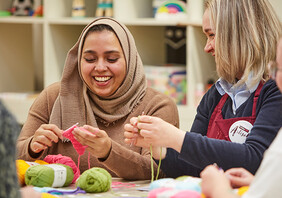How to Finger Knit a Skipping Rope
Level
Intermediate
Time
1 hour
Budget
10 - 30
How to fill playtime with Old World charm? Start with vintage handles from a local garage sale or Etsy. Then simply add finger-knit cotton cording for a beautiful heirloom toy that any child will love!
Image and content courtesy of Knitting Without Needles by Anne Weil, published by Potter Craft.
You will need
How to make
Step-1
Step-2
Step-3
Step-4
Step-5
Step-6
Step-7
Step-8
Step-9

Step-10

Step-11

Step-12

Step-13


Step-14

Step-15

Step-16

Step-17
Step-18
Step-19

Step-20
Step-21

Step-22
Step-23
Step-24

Step-25

Step-26

Step-27

Step-28

Step-29

Step-30








